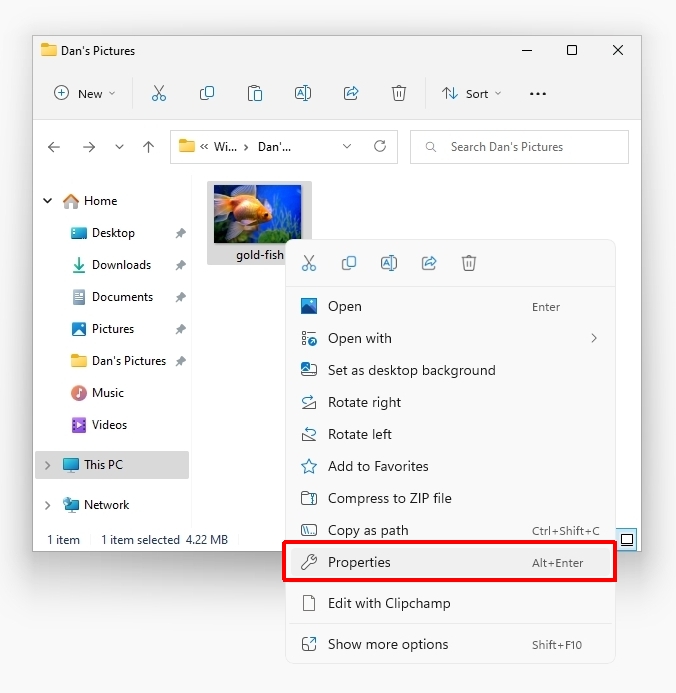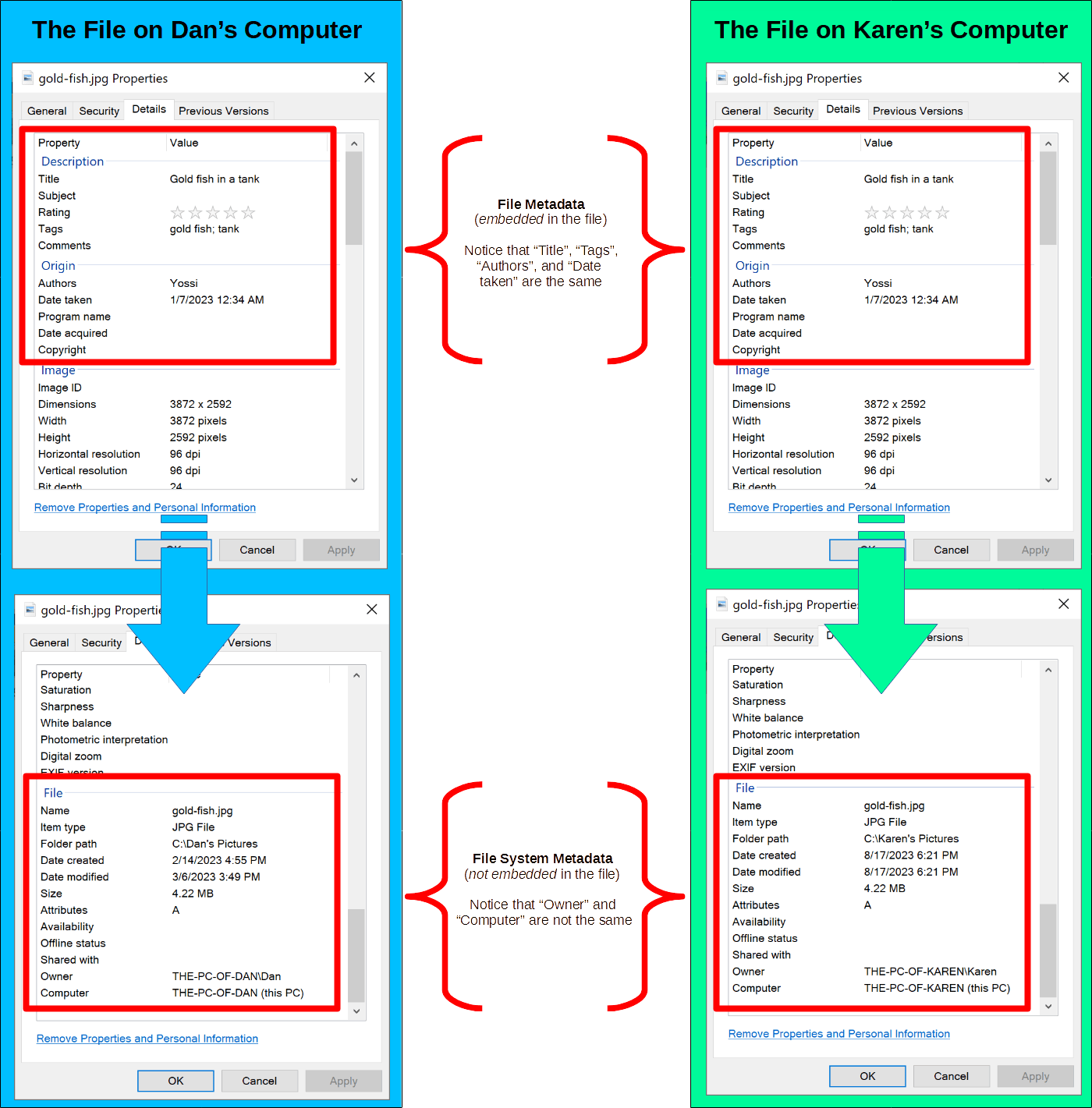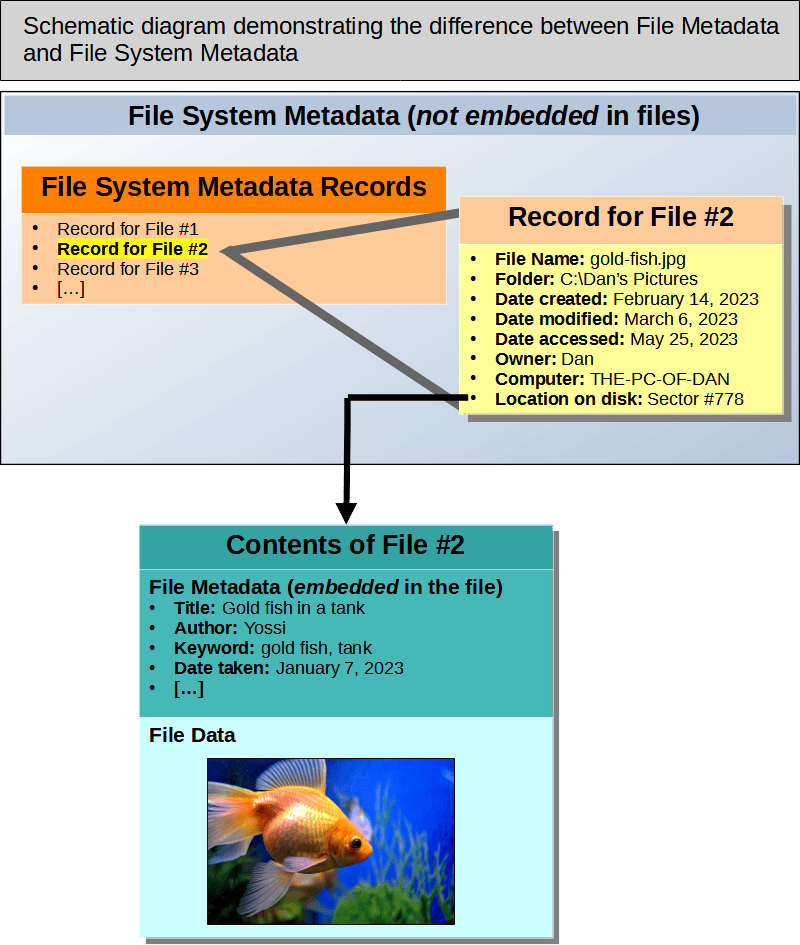
|
Home | Site Map | Contact Us |
     
|
Windows File Properties Viewer: Falsely Alarming, Dangerously Reassuring
The integral file properties viewer of Windows 11 is often relied upon by users to asses the risk of divulging private and confidential information that may exist in file metadata, before sharing files with others. However, this presents with two problems:

The user can open the integral file properties viewer of Windows by right-clicking on any file and selecting "Properties" from the context menu. To see all the possible properties that this feature supports, in the "Properties" window, the user needs to select the "Details" tab. Contents
Problem 1: Falsely Alarming Mixture of File Metadata and File System MetadataThe integral Properties viewer shows three types of data:
In the "Details" tab of the "Properties" viewer, all the properties under the "File" section are file system metadata, which is not part of the file itself. The following figure is a side-by-side comparison of the properties of the same file on two different computers. The File Metadata (embedded in the file) is the same, while the File System Metadata (not embedded in the file) is different.  
Showing File Metadata next to File System Metadata in the properties viewer leads to user confusion and is a common source of an anxiety for many. Users are often worried that if they will share the file with others, the File System Metadata will be shared too. Users also often believe that if they have used a metadata remover (such as BatchPurifier™) to get rid of metadata, it doesn't function properly, since they are still able to see the File System Metadata when looking at the properties viewer. But that's not the case, since File System Metadata is not part of the file itself to begin with, thus it cannot be removed. File System Metadata can be thought of as labels on a book shelf. If a book is taken out, the labels will not go along. The information In the "General" and "Security" tabs are all File System Metadata, and not part of the file. Any previous version in the "Previous Versions" tab is not part of the file either. Other than the file name, File System Metadata will not go along when using a web browser to upload a file to a server. When sending a file as an email attachment, some email clients, such as Microsoft Outlook, will add the Date created and Date modified timestamps to the email header. When copying a file to a another disc or USB storage, Windows will pass through the Date modified timestamp, along with the file name. When compressing a file within a ZIP file, the Date modified timestamp will also be saved. The Date created and Date accessed timestamps are also save by some compression utilities. Problem 2: Dangerously Reassuring Due to a Very Limited Support of File Formats and Metadata ElementsThe integral Properties viewer has a built-in support for showing only a small number of properties from only eleven notable supported file formats: Old Microsoft Office® 2003 files, (Word, Excel, and PowerPoint files with three letter extension - DOC, XLS, and PPT) JPEG, TIFF, PNG, MP3, MP4, WAV, AVI, and ASF. (including WMA and WMV) Some of the properties can also be edited with it. Most of the supported file formats can hold several different types of metadata formats concurrently, but this properties viewer can only show few of them. (e.g. it can only show INFO properties in WAV files, but not XMP, ID3v2 tag, Broadcast Audio Extension, iXML, Cart Chunk, or ISRC) There are many file formats that can hold metadata that it cannot show entirely. (e.g. PDF) It's possible for software developers to extend the supported file formats and metadata formats of this properties viewer. Notably, if Microsoft Office® 2007 or above is installed on the computer, this viewer can also show some properties from Microsoft Office® 2007-2024 files, (Word, Excel, and PowerPoint files with four letter extension - DOCX, XLSX, and PPTX) as well as OpenDocument Text files. The limited support of embedded metadata elements poses a problem from a privacy point of view. The user might easily believe that the file contains only the properties shown in this viewer, when in fact it may, and often does, contain a whole lot more properties and other types of potentially privacy-compromising hidden data, such as document revision history and presentation notes. Thus, the user might share the file with others, while unknowingly divulging personal and confidential information. ConclusionWhen inspecting a file intended to be shared with others using the integral file properties viewer of Windows, users should not be alarmed by the presence of File System Metadata, as it is not part of the file itself. File System Metadata properties includes "Owner", "Computer", "Folder path", "Date created", and "Date modified". On the other hand, users should bear in mind that this viewer is dangerously reassuring due to its very limited support of file formats and metadata elements. Users should not rely on this viewer to asses the risk involved in sharing files, and should clean every file before sharing it with others using a comprehensive hidden data & metadata remover, that has a broad-spectrum of supported hidden data & metadata types, (such as BatchPurifier™) regardless of the information shown by this properties viewer. Importantly, the Remove Properties and Personal Information feature, that can be accessed from the "Details" tab of this viewer, is not a reliable tool for removing potentially harmful and privacy-compromising hidden data & metadata from files intended to be shared with others, due to its very limited support of file formats and hidden data types, and due to its highly misleading user interface. This feature can only remove a small number of metadata properties from only nine notable file types, and it cannot remove at all many dangerous hidden data types, including document revision history and document comments. Related White Papers
|
| ©2025 Digital Confidence Ltd. All rights reserved. Contact Us | Site Map |